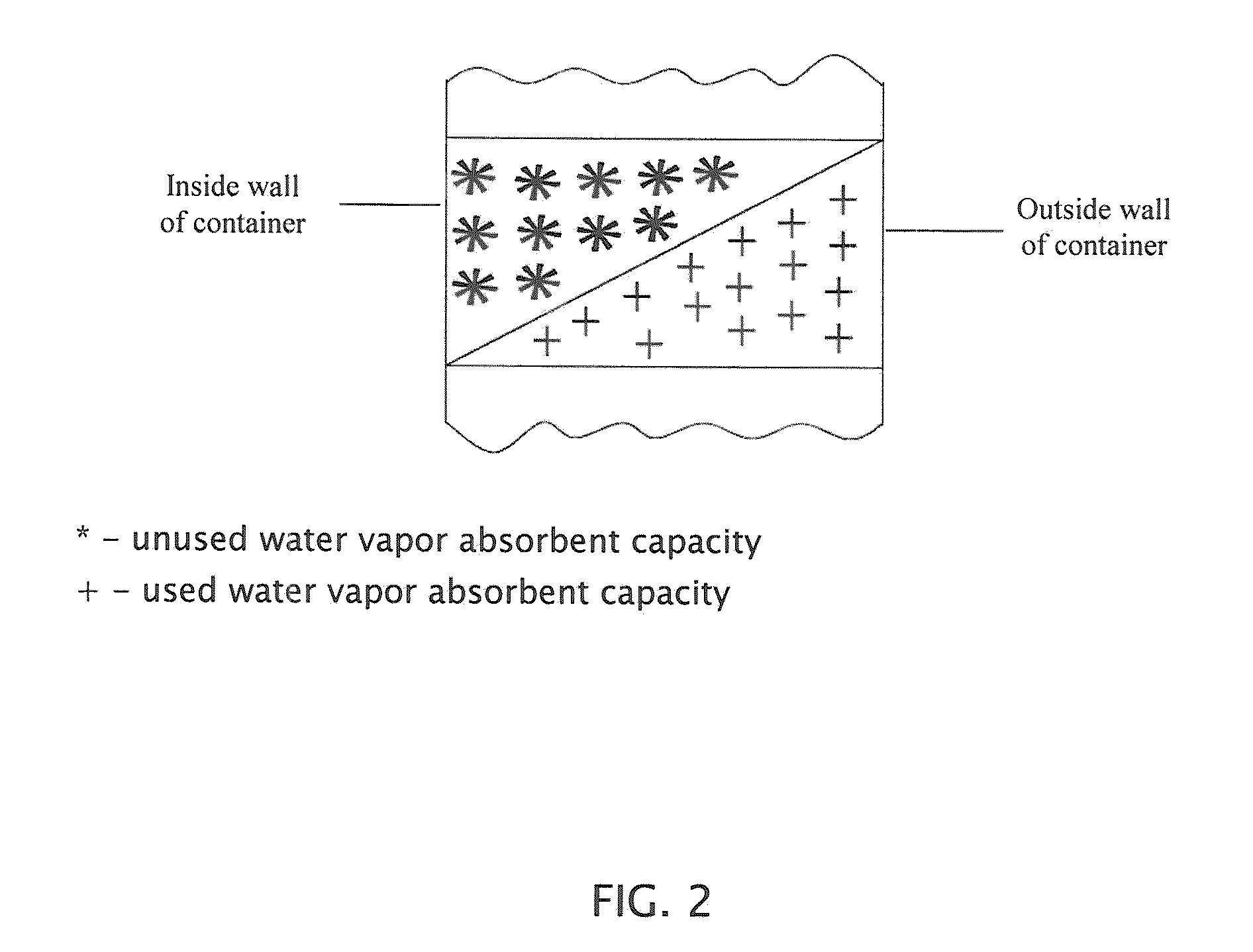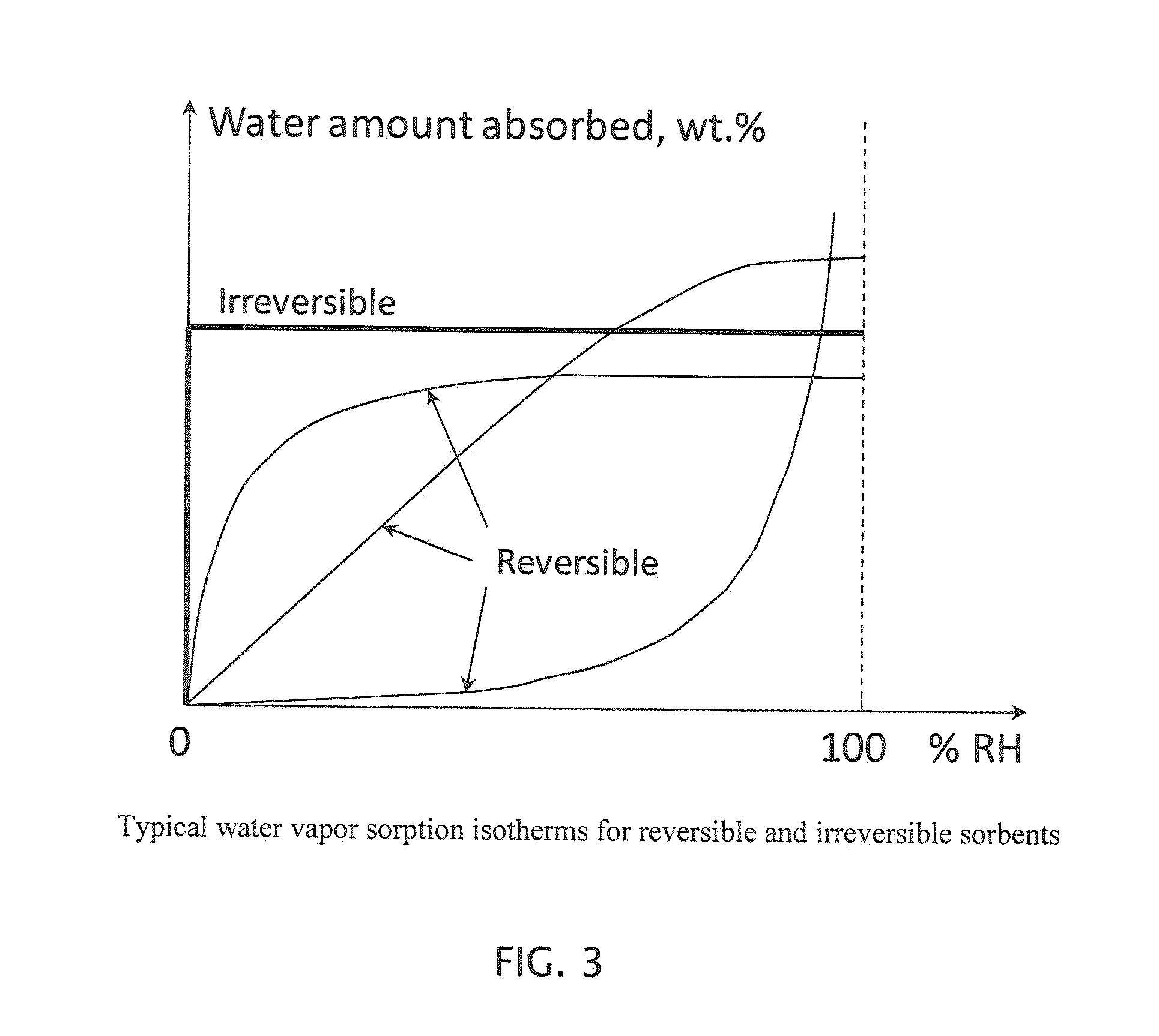Water vapor barrier composition
a technology of water vapor and composition, applied in the direction of container preventing decay, separation process, other domestic articles, etc., can solve the problems of contaminating the packaged product, limited in their application, undesirable materials, etc., and achieves the effects of reducing agglomeration and channeling, reducing lag time, and improving barrier properties
- Summary
- Abstract
- Description
- Claims
- Application Information
AI Technical Summary
Benefits of technology
Problems solved by technology
Method used
Image
Examples
example 1
[0058]30 wt. % of micronized (average particle size 1-10 micrometer) silica gel are compounded with extrusion grade polypropylene in a twin-screw extruder and subsequently pelletized. 1 wt. % mineral oil was added to and mixed with pre-dried silica gel powder before compounding. The FIG. 5 (backscatter SEM image of 0.5 mm thick extruded sheet made from the compound) demonstrates uniform silica gel particle distribution with essentially separated particles in 1-10 micrometer size range. In FIG. 5 the silica shows as bright powder particles at 2 micrometer depth. No agglomeration is indicated.
example 2
[0059]Several sizes of containers are produced from the composite sheet of the Example 1 utilizing thermoforming process (vacuum forming into a female mold and vacuum forming with plug assist). The containers range from multicavity blister packs with individual cavity diameter of 10 mm and 4 mm depth to rectangular containers with approximate dimensions of 50×50×30 mm. The resulting wall thickness of the containers is within 0.15-0.4 mm. The water vapor transmission rate of individual containers was subsequently measured at 23° C. and 90% RH to validate the barrier performance. More than 3 consecutive months of zero water vapor permeation rate were observed for the thermoformed samples while the capacity based calculations showed that this level of performance should last for at least 12-18 months or more followed by gradual RH increase in the blister cavity.
example 3
[0060]40 wt. % of 4A molecular sieve (average particle size 3-15 micrometer) are compounded with extrusion grade low density polyethylene in a twin-screw extruder and subsequently pelletized. 1 wt. % mineral oil was added to and mixed with polyethylene pellets before compounding. The FIG. 6 (optical image of 0.5 mm thick extruded sheet made from the compound) demonstrates uniform particle distribution with essentially separated particles in 3-15 micrometer size range. In FIG. 6 the round dark images are the molecular sieve particles. No agglomeration is shown.
PUM
| Property | Measurement | Unit |
|---|---|---|
| diameter | aaaaa | aaaaa |
| diameter | aaaaa | aaaaa |
| diameter | aaaaa | aaaaa |
Abstract
Description
Claims
Application Information
 Login to View More
Login to View More - R&D
- Intellectual Property
- Life Sciences
- Materials
- Tech Scout
- Unparalleled Data Quality
- Higher Quality Content
- 60% Fewer Hallucinations
Browse by: Latest US Patents, China's latest patents, Technical Efficacy Thesaurus, Application Domain, Technology Topic, Popular Technical Reports.
© 2025 PatSnap. All rights reserved.Legal|Privacy policy|Modern Slavery Act Transparency Statement|Sitemap|About US| Contact US: help@patsnap.com



